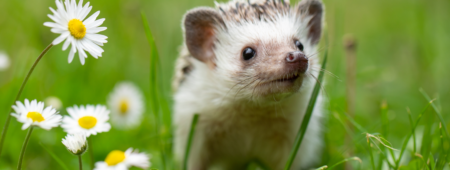The most endangered animal species - what do you need to know?
In this article you will find an overview of just some of the endangered species and find out what makes their future in question.
Our planet is home to many amazing animal species - some of which have survived for millions of years, remembering the days of the dinosaurs. Unfortunately, human activity, climate change, pollution and poaching mean that many unique creatures are now seriously threatened with extinction.
In this article you will find an overview of just some of the endangered species and find out what makes their future in question.

How do we know which species are in danger of extinction?
Information on endangered species can be found in the Red List of Threatened Species, compiled by the International Union for Conservation of Nature (IUCN). The purpose of this list is to draw attention to the problem of global biodiversity loss. There are currently more than 160,000 species on the list, 47,000 of which are considered threatened with extinction. It is the world's most comprehensive list on endangered animals, plants and fungi.
The list has been in place since 1964 and is constantly being updated. Each species assessed is classified according to one of several categories:
- LC (Least Concern) - species of least concern,
- NT (Near Threatened),
- VU (Vulnerable) - vulnerable species,
- EN (Endangered) - endangered species,
- CR (Critically Endangered) - critically endangered,
- EW (Extinct in the Wild) - species that are extinct in the wild, that is, species that are no longer found except in zoos or other places that are not their natural habitat,
- EX (Extinct) - extinct species.
With this list, changes can be monitored and conservation action can be planned and responded to quickly where necessary - before it is too late.
Why are species going extinct?
The main causes of animal extinction include:
- Habitat loss due to deforestation and infrastructure development,
- climate change affecting ecosystems,
- poaching and illegal wildlife trade,
- environmental pollution,
- armed conflicts.
Threatened species
African forest elephant

It inhabits the rainforests of West and Central Africa. It is mainly found in Gabon and the Republic of Congo, with smaller populations found in Cameroon, Liberia and Côte d'Ivoire, among others.
The species is seriously threatened by habitat loss and poaching - ivory is a valuable commodity on the black market. WWF reports that their population has declined by as much as 62% between 2002 and 2011, with the IUCN officially classifying it as 'critically endangered' in 2021.
Javan rhinoceros

The Javan rhinoceros is one of the world's rarest mammals. Formerly inhabiting areas from India to Indonesia, it is now only found in the Ujung Kulon National Park in Java. Currently, the Javan rhino population numbers around 100 individuals.
The species has almost become extinct through poaching - its horn is considered extremely valuable - and wars in Southeast Asia.
Dwarf chimpanzee (Bonobo)

Bonobos are a close relative of humans, living in the forests of the Democratic Republic of Congo. Their population, according to the WWF, numbers between 10,000 and 50,000 individuals.
These animals are killed for meat, which is a serious problem in poverty-stricken regions of the world. In addition, the clearing of forest areas limits their ability to survive.
Biscayan cetacean (North Atlantic whale)

It is one of the most endangered whale species - with fewer than 400 individuals currently alive.
It used to be a target for hunting because of its valuable fat. Today, the main threats are collisions with ships, entanglement in fishing nets and ocean pollution.
Humphead warbler (Napoleon)

This impressive fish inhabits the coral reefs of the Red Sea and Indian Ocean. It reaches up to 2 metres in length.
In the past it was caught in large numbers - today it is banned from trade in the EU and many Asian countries. An additional threat to this species is the extinction of coral reefs, which are its natural habitat.
Snow Irbis (Snow Leopard)

The snow iris inhabits the mountainous areas of Central Asia, including the Himalayas and the Altai Mountains. There are currently about 4,000 individuals living in the wild.
It is threatened by poaching for its valuable fur and by climate change, which is destroying its natural habitat and reducing its access to food.
Likaon frisky (African wild dog)

It is one of the most endangered mammals in the world. It inhabits southern Africa and parts of eastern Africa. It lives in herds and is an excellent hunter.
Wild dogs are threatened by disease, loss of natural habitat, competition with larger predators (such as lions or hyenas) and killing by humans.
Diugo

Also sometimes referred to as the 'sea cow', it is a large, herbivorous marine mammal related to manatees and sea lions. It inhabits the warm and shallow waters of the Indian Ocean and western Pacific Ocean.
Dugongs feed mainly on seagrasses, the disappearance of which due to human activities is a threat to their survival. In addition, they are often accidentally killed in fishing nets.
The tortoiseshell turtle

It is one of the most endangered species of sea turtle, living on coral reefs and in the shallow lagoons of tropical oceans. Its presence on reefs is vital to maintaining their condition.
Its shell was once a prized raw material for making ornaments and its meat was considered a delicacy. Although now protected, its population is steadily declining due to marine pollution and the extinction of coral reefs.
What can we do?
To help save endangered species, it is worth supporting organisations dedicated to their protection - such as WWF, Greenpeace, or smaller local foundations and institutions working for biodiversity. You can make a donation, get involved as a volunteer or even symbolically 'adopt' an animal from a distance.
Equally important are the choices we make every day. By reducing our use of plastic, segregating our waste, choosing environmentally friendly products - we also have an impact on the fate of many species.



